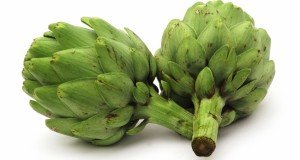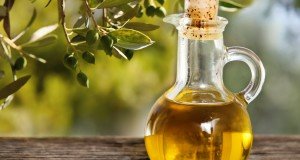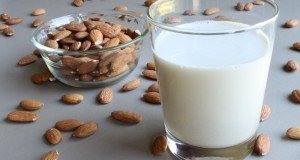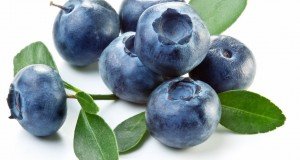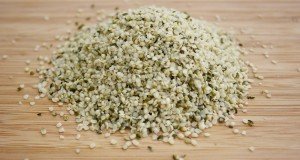Yogurt exposed: 4 surprisingly unsafe (hidden) ingredients
(NaturalHealth365) A favorite snack to millions, yogurt has made several top 10 health lists – including Food Network’s 10 Snacks Under 250 Calories. You may even love it for its power-packed protein, bone-building calcium, and beneficial gut-boosting probiotics. Opting for a healthy snack is admirable for those who are health conscious, but do you really know what’s in the yogurt you eat?
Recently, the Cornucopia Institute came out with a new report criticizing the yogurt industry – especially major brands – for turning health food into junk food. So, while you were being choosy with your yogurts, you may have purchased brands loaded with sugar and a myriad of questionably safe additives.
Cornucopia Institute’s shocking discovery includes harmful ingredients not labeled
Cornucopia’s two year investigation on major brands of yogurt revealed a shocking discovery. Their eye-opening findings include several disturbing ingredients not included on package labels. Shocked by their own findings, Cornucopia filed a formal complaint with the United States Food and Drug Administration (FDA) and asked them to investigate some yogurts on the market as they didn’t meet the legal definition of yogurt.
The following are four of the surprisingly unsafe ingredients:
1. Carrageenan – This poison ivy of the ocean is a food additive extracted from red seaweed. For four decades, scientists have warned that the use of carrageenan is not safe for food consumption. Research has proven again and again its association with gastrointestinal inflammation and higher rates of intestinal lesions, ulcerations, and even malignant tumors. Yet, manufacturers resist the removing of this ingredient in yogurt.
2. Dimethylpolysiloxane – Also known as “silly putty,” this silicone oil is widely used in restaurants as an anti-defoamer in oil fryers. It is also used during yogurt’s processing. However, it is not mentioned on the label even if residues remain in yogurt. While the World Health Organization declared the substance to be non-toxic, the FDA allows it to be preserved by formaldehyde which is a well-known irritant that induces oxidative stress and increases the risk of immune disease and cancer.
3. HFCS-90 – This toxic additive is a variation of high fructose corn syrup (HFCS); however, it contains a much higher level of HFCS.
According to a long-term study at Princeton University, the effects of HFCS consumption is much more dangerous than other simple sugars such as sucrose. The study revealed that HFCS doesn’t just contribute to fat gain but actually increases obesity substantially which contributes to known health risk factors (high blood pressure, coronary artery disease, diabetes, and cancer). Deceptively, yogurt manufacturers have listed HFCS-90 as “fructose” or “fructose syrup” which are terms that can be associated with natural sugars from fruit. The big difference is that it’s not!
4. Neosugar – This highly processed form of sugar cannot be digested by the human digestive tract. According to Cornucopia, food manufacturers market it as a “prebiotic” or “natural dietary fiber” because it supposedly feeds the microorganisms in the digestive tract.
However, neosugar is processed from either sugar cane or sugar beets that are commonly genetically modified. Aspergillus japonicus is a processing agent for hydrolyzation but is a causative agent in plant disease. Other processing aids include hydrochloric acid (a highly corrosive mineral acid), sodium hydroxide (lye), and active carbon (a purification agent).
Neosugar is sometimes labeled as “Nutraflora” and “Fructan.” Don’t these alternative names sound much healthier? (These marketing agencies can really be deceptive)
Other unnatural ingredients added to yogurt
A real eye-opener: Cornucopia’s report also reveals many other harmful ingredients that food manufacturer’s add to yogurt:
- Sweeteners – sugar; processed sweeteners such as high fructose corn syrup, fructose, dextrose, and more; and artificial sweeteners such as aspartame, acesulfame potassium, and sucralose
- Thickeners – carrageenan, xanthan gum, modified corn starch, food starch, pectin, and gelatin
- Colors – artificial colors, carmine color, annatto, and colors from conventional fruit and vegetables
- Highly Processed, Synthetic Nutrients/Nutraceuticals – vitamins and minerals
- Fructooligosaccarides – neosugar and inulin
- Nanoparticles – titanium dioxide
- Flavors – fruit-flavor without the fruit, artificial flavors, natural flavors, malic acid
While some of these ingredients – such as pectin and natural flavors – may seem perfectly fine, they are not always. Because pectin comes from citrus peel, it may seem harmless.
The truth of the matter is that the processing of pectin is what is actually harmful. This processing uses synthetic solvents such as ethanol, isopropanol, or hexane (a neurotoxin and hazardous air pollutant).
Therefore, we can’t always trust what sounds good. Knowing the facts is important!
Real yogurt is a health food
Yogurt is not real health food when it is produced with milk from confined cows fed genetically modified organisms (GMOs) and mixed with a plethora of harmful ingredients that are detrimental to health. When shopping for yogurt look for organic, grass-fed and even raw if your state allows it.
Plus, you may also want to check out Cornucopia’s scorecard for yogurt here.
About the author: Abby Campbell is a medical, health, and nutrition research writer. She’s dedicated to helping people live a healthy lifestyle in all aspects – physically, mentally, emotionally, and spiritually. Abby practices, writes, and coaches on natural preventive care, nutritional medicine, and complementary and alternative therapy.
References:
https://www.cornucopia.org/Yogurt-docs/CultureWars-FullReport.pdf
https://www.inchem.org/documents/jecfa/jecmono/v46aje63.htm
https://www.accessdata.fda.gov/scripts/cdrh/cfdocs/cfcfr/CFRSearch.cfm?fr=173.340
https://journals.plos.org/plosone/article?id=10.1371/journal.pone.0104069
https://www.princeton.edu/main/news/archive/S26/91/22K07
https://jn.nutrition.org/content/119/4/553.long
https://www.consumerreports.org/content/dam/cro/magazine-articles/2015/May/Consumer%20Reports_From%20Crop%20to%20Table%20Report_March%202015.pdf
https://cornucopia.org/yogurt-scorecard



